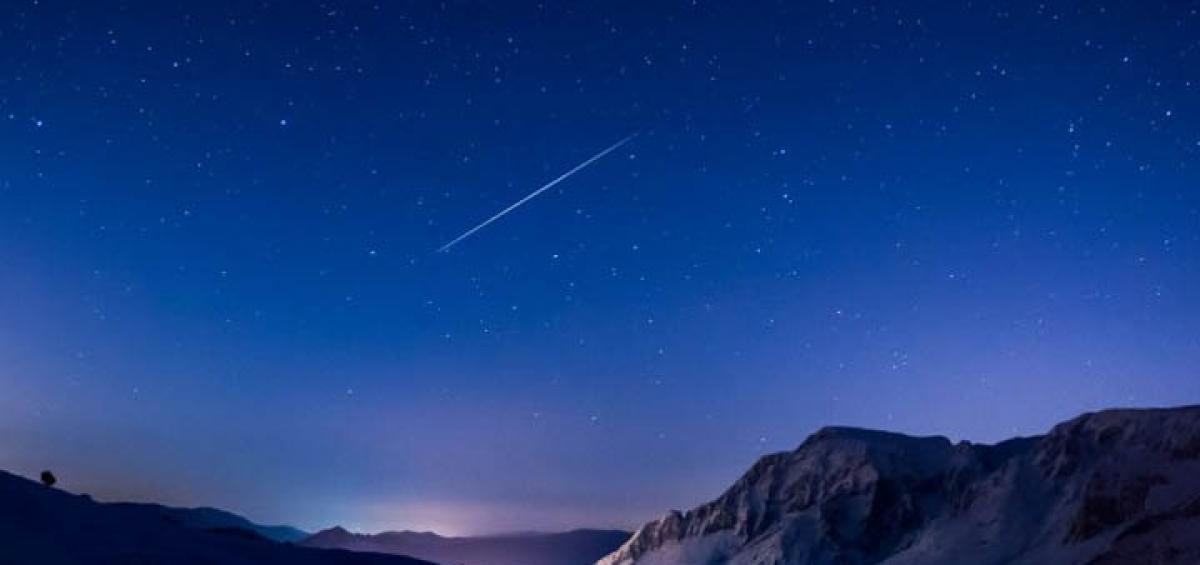Live
- Leaked! iPhone 17 Battery, Camera, Chipset, Design and Display Upgrades
- Kerala mulls increasing retirement age of govt employees to 57
- Credit, deposit growth now in line with each other in India: Report
- Very 'productive' meeting with PM Modi, says British PM Starmer
- Actor Satyadev in Bengaluru to promote Zebra movie
- Vijaya Chaitanya Palanki Leads the Development of Advanced Data Analytics Algorithms for Upsell Scoring, Churn Prediction, and Promotion Management
- Wanaparthy collector says Prajapalana Vijayotsava kaka yatra from 19 Nov to 7 Dec
- Hamas says security operation kills 20 aid truck looters
- Flipkart Mobiles Bonanza Sale: Top 5 Smartphone Deals with Great Discounts
- Supreme Court Issues Notices to YS Avinash Reddy in YS Viveka murder case
Just In
Watch Geminid meteor shower with naked eyes Dec 4 to Dec 17


Watch Geminid meteor shower with naked eyes Dec 4 to Dec 17 Away from city lights from 4th December, 2015 to 17th December, 2015 people can witness annual celestial spectacle of Geminid Meteor Showers (Ulka Patham in Telugu/उल्का स्नान) from pollution free dark clear skies.
Watch Geminid meteor shower with naked eyes Dec 4 to Dec 17 thehansindia editor's choice Away from city lights from 4th December, 2015 to 17th December, 2015 people can witness annual celestial spectacle of Geminid Meteor Showers (Ulka Patham in Telugu/उल्का स्नान) from pollution free dark clear skies.

As per the International Meteor Organization (IMO) this meteor shower peak is expected at 11.30 p.m. IST (i.e. 18.00 p.m. UTC) on 14th December 2015 with maximum of up to 120 Meteors per hour to be visible from clear dark skies.
This annual meteor shower is being observed by people across the world from 4th December 2015 this year. And one can see it up till 17th December 2015. Why/How Locate Gemini – What you will see? – the Twins (Pattern of Stars)? Why Wait till 9pm? 3 hours after Sunset from 9pm onwards looking between North East and East Direction one can locate Gemini Constellation (two bright Stars parallel to each other – in the pattern of Stars appearing/known since ages as Twins).

© 2024 Hyderabad Media House Limited/The Hans India. All rights reserved. Powered by hocalwire.com






